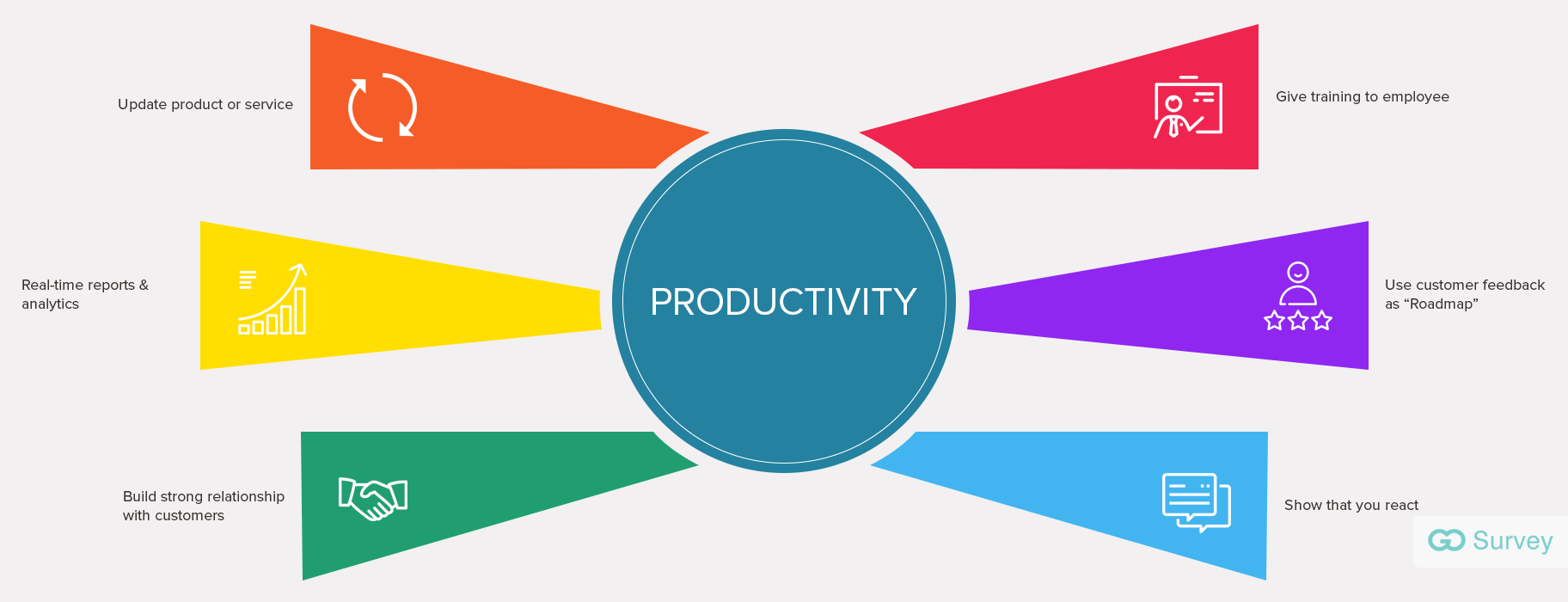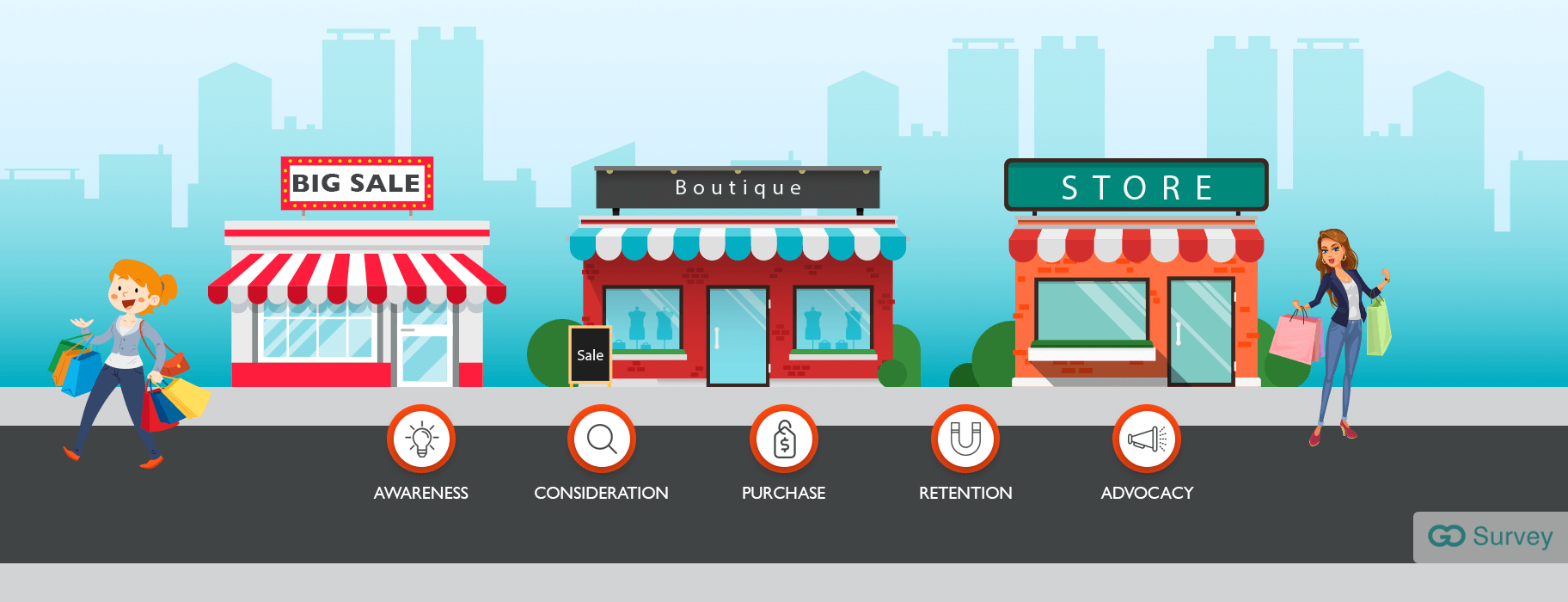Are you tired of receiving endless incomplete surveys from customers? That is because you have a low survey response rate and you are not the only one. People get approached by many organisations asking for their opinions on a range of topics. Their interest in giving answers keeps decreasing over the period. How do we change this? You need to ensure that your survey is worthy of grabbing their attention and time. Now you must be wondering how to make your survey attractive and what is the number of responses you need to get successful results.
Although there is no set number of response rates that defines the success of your survey, we try to investigate ways how we can boost results. Let us take a step back and understand what a Survey Response Rate is.
Survey Response Rate – Definition
As the name suggests, the rate at which we receive complete responses on a survey is known as the survey response rate. It is common to see a customer start a survey but leave it unfinished. These incomplete responses add no value, and hence, cannot be included in the total survey result.
How to calculate the survey response rate?
A survey response rate is mostly calculated in a percentage format by dividing the number of complete survey responses to the total number of surveys that were sent out to the consumers. This number is further multiplied into 100 to get its percentage value.
For example, a home appliance brand sends its questionnaire to 320 people and only 40 of them complete it. The rest either do not take the survey at all or leave it incomplete. In this case, our survey response rate would be 12.5%.

The purpose of conducting any survey is to use the data for research or to make other strategic decisions. A lower survey response rate might not necessarily be questionable as it might be a product of the main target audience. On the other hand, a higher survey response rate from an irrelevant audience will make the results less reliable.
Influencing Factors in a Survey
Following are the factors that impact responses from customers.
- Survey Goal
It is important to set a clear goal behind conducting a survey and build a questionnaire around it. If the surveyor lacks clarity, then how will they convey their intentions to the customers and convince them to give responses. Vague questions trigger a red flag in the customers’ minds while clear, concise questions have higher chances of getting a response. Research shows a decline of 11% in the response rates when vague and unclear questionnaires have been used.
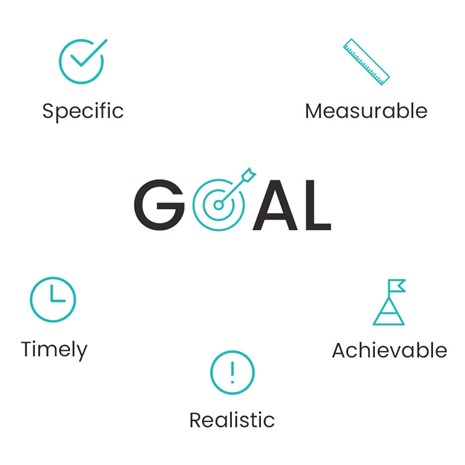
- Length of the Questionnaire
“Sorry, I do not have time” is the usual response you will receive from customers if you ask them to take a survey that has more than 25 or 30 questions. Customers are not motivated to invest time in something that brings no value to them. The ideal survey length is around 10 to 12 questions that take not more than 5 minutes. Studies show a 15% fall in the response rate for surveys that take more than 5 minutes, while a 40% fall for surveys that take more than 10 minutes to complete.
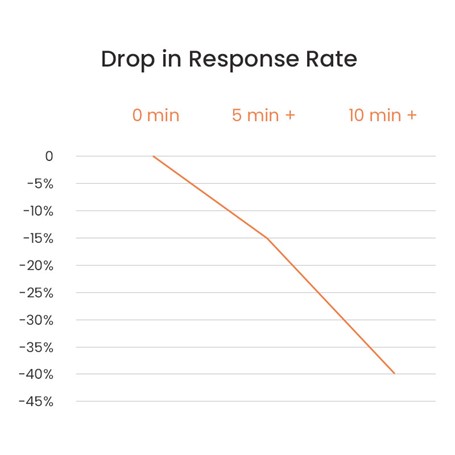
- Target Audience
Who is your target audience? Surveyor needs to have clarity on the purpose of the survey and what kind of audience is the right fit to obtain valuable results. For example, an insurance company wants to conduct a survey on the purchasing pattern of users. If the respondents are students, who do not take decisions regarding insurance in the household, then their responses are not going to be helpful. In most scenarios, students might not give complete responses.

Analysis and identification of the right audience enhances survey response rates.
- Survey Design
The design of a survey typically includes elements like the style, language, medium, interactivity, etc. The survey must look subtle and appealing to customers. Avoid using loud background colours. The style and size of fonts should be easy to read and understand. This is where the role of language comes in. It is highly crucial to draft questions in a language that is not difficult to understand. With the help of GoSurvey, you can draft questions in any language. This gives you scope of reaching the regional and rural communities who have difficulty understanding English. Communicating with them in a language they understand increases clarity and probability of receiving appropriate responses.
Too many open-ended questions might also impact response rates negatively. Combine multiple-choice questions, ratings, Yes/No questions, or similar kind of a medium that does not require detailed inputs from the respondents.
- Survey Type
Response rates vary a lot based on the type of survey. As per a research conducted by a US Company, the range of response rates for customer satisfaction surveys or market research surveys is 10% – 30%. On the other hand, employee surveys have a higher range of 25% – 60% as employees are compelled to give responses.
- Survey Incentives
Customers are not motivated to do anything for you unless there is something in it for them too. As per studies, a 10% to 15% increase has been observed in the response rates when customers have been offered an incentive. These incentives can be in the form of discounts, coupons, lucky draw tickets, or other deals that might guarantee the customer returns to avail the incentive. It is like killing two birds with a stone. You get a survey response and customer retention.
A glitch in any of these factors will directly impact the response rates as customers would not be willing to give their inputs.
Methods to Improve Response Rates
- Customer is king – Make them feel like one
A direct approach like – “Fill this form, we want your feedback” has a very authoritative tone and sounds very rude. It is important to make customers feel special and express how valuable their response is for the organisation. The best way to do this is by explaining your intentions behind the survey and how it will help you make a roadmap for the product/brand.
Use language that is polite. Phrases like the following sound respectful and thankful.
“Please give us 2 minutes of your time”, “We would love to hear your thoughts”, etc.
Time is money in today’s world. If a customer takes time to answer a questionnaire, show them that you are grateful. Finish surveys with “Thank you for giving your valuable time”.
- Provide Attractive Incentives
This is one of the easiest ways to boost your response rate. People are often attracted to free goodies and perks. However, a minor setback in this method is that customers might just rush through the survey to finish it and receive incentives. So, make sure the incentives are not too big to damage the survey result or cost more money to the company. Offering a small discount coupon or a voucher is a reasonable incentive.
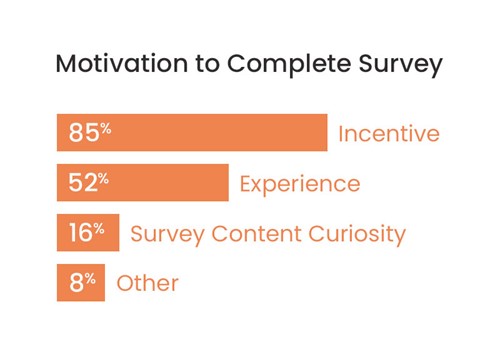
Another way to attract customers is to show them the whole survey result as an incentive. This is called the “show me yours and I’ll show you mine” approach. People can be curious to know what others think about the same matter. On completion of the survey, you can show them the overall results and where they stand on the subject. This way you can save money on incentives and yet encourage people to complete surveys. Research shows that the highest motivation to complete surveys comes from giving incentives.
- Keep it short and simple
People are not interested to spend a lot of time completing surveys. So, keep it short and straightforward. Every question should be clear and relevant to the main purpose of conducting the survey. To make things easier, inform the respondents of how much time they need to give for the survey or the number of questions in the survey. Adding a progress bar also helps in this context. The customer knows exactly how many more questions he/she must answer, and they are mentally prepared to do so.
- Use brand identity
Avoid using custom made templates or blank forms to conduct the survey. Customize the design of the questionnaire by branding your company name or logo, using colour patterns that stand for your brand. This brings a professional look and feel. The customers feel comfortable giving responses as they know who is behind conducting the survey and who will be looking into their responses.
Advantages of having good response rates
The reason for conducting surveys is to collect data for the following:
- Planning strategic roadmaps for the organization
- Making quick changes to products or services based on responses
- Knowing a brand’s value amongst its customer base
- Obtaining general feedback
Lower response rates often lead to less data collection that might not be enough to analyze. However, a higher response rate from the wrong audience or from customers who are merely completing surveys to receive incentives might not be helpful. It is important to get higher accurate response rates from the right audience to get appropriate results.
To wrap it all up, if you add the right ingredients to your survey, you will notice a guaranteed improvement in response rate.
Target the right audience, make short and precise questionnaires, add incentives, value your customers, and voila! The perfect survey with improved response rates is ready!






